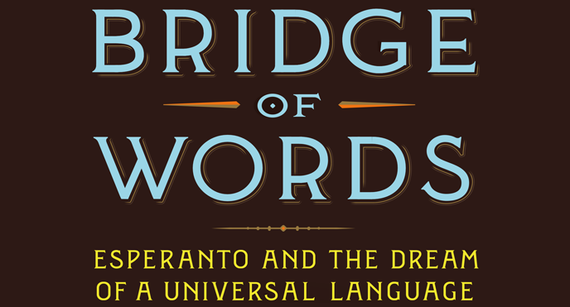 By Esther Schor
By Esther Schor
On the muggy July afternoon when I visited the Okopowa Street Cemetery, the dead Jews who'd slept on while the Nazis packed their descendants into cattle cars bound for Treblinka were still asleep. After hours tracking the contours of the Ghetto behind a detachment of Israeli soldiers, I was relieved to be among the lush ferns, rusted grilles, and mossy stones. Here and there, tipped and broken monuments had settled where they'd fallen among yellow wallflowers. In other sections, weeded, swept, and immaculately tended, huge monuments incised with Hebrew characters bore a heavy load of sculpted fruits, animals, priestly hands, and the tools of trades. The stones were cool to the touch, amid a musky odor of rotting leaves.
Among the largest monuments in the cemetery—the baroque monument to the actor Ester Rachel Kamińska; the porphyry stone of writer I. L. Peretz; the ponderous granite tomb of Adam Czerniaków, who after pleading in vain for the lives of the Ghetto's orphans took his own—was a large sarcophagus. On top rested a stone sphere the size of a bowling ball. Below a ledge of marble chips planted with plastic begonias was a large mosaic, a sea-green star with a white letter E at the center. Rays of blue, red, and white flared out in all directions. It was gaudy and amateurish, awkward in execution. The inscription read:
DOKTORO LAZARO LVDOVIKO ZAMENHOF KREINTO DE ESPERANTO
NASKITA 15. XII. 1859. MORTIS 14. IV. 1917
Esperanto: I recalled one glancing encounter with it when I was twenty-three, an American in self-imposed exile, living in a chilly flat in London. The reign of Sid Vicious was about to be usurped by Margaret Thatcher, and the pittance I earned in publishing was just enough to buy standing room at Friday matinees and an occasional splurge on mascara. My boyfriend, Leo, and I found a rock-bottom price for a week in the Soviet Union; the only catch was that January, the cheapest time of the year to go, was also the coldest: in Moscow, 28 degrees Fahrenheit below; in Leningrad, a balmy zero. Leo took his parka out of storage; I borrowed warm boots, a fake-fur coat, and a real fur hat, and off we went. (In fact, I found it much warmer in the Soviet Union than in London, at least inside—chalk that up to central heating, which I could not afford.)
At the Hermitage, I wandered over to a large, amber-hued painting labeled Рембрандт. Pembrandt?—no, Rembrandt. A prodigal myself, I recognized it as a painting of the Prodigal Son, a young man kneeling in the embrace of a red-caped patriarch. As I drew closer to the supplicant, I noticed he had an admirer besides me: a tall, slender woman about my age with wispy bangs, stylish boots, and a brown wool coat. The previous day, a well-coiffed Intourist guide had explained to me that there were three kinds of women in Russia: women with fur hats, women with fur collars, and—she paused for effect—women with no fur at all. Here was one of the latter, and while I noted her furlessness, she greeted me in Russian. "Привет."
"Preevyet. Hello," I said.
She smiled. "My name is Ekaterina, I am from Alma Ata. Where are you from?" She seemed to be rummaging for more English words, but after "Do you speak Esperanto?" the pantry was bare.
Laughing, I asked, "Français?" but she wasn't joking.
"Ne, ne," she said deliberately, her gray eyes narrowing, "Es-per-AN-to." One of us, I was sure, was ridiculous, but who? She, speaking to me in a pretend language? I, ignorant of Russian, Kazakh, and Esperanto, in my red Wellingtons, got up as Paddington Bear? Even as we shook hands and parted ways, the conversation was swiftly becoming an anecdote, a story to tell next week at the Swan over a pint of bitter.
Twenty-five years later, with prodigal sons of my own, I stood at what might have been, for all I knew, the grave of Esperanto itself, and thought of Ekaterina. She'd be in her late forties now, her forehead lined, her hair graying or, more likely, rinsed flame-red. Still furless, she'd be stuck in a concrete high-rise in Alma Ata (now Almaty), where years pass slowly, heaving their burdens of debt and illness and worry. I wondered how Esperanto had journeyed from Poland to Kazakhstan, how long it had endured, and who had erected this monument. Who laid out this mosaic, chip by tiny chip—men? women? both? Jews? Poles? Kazakhs? Where had they come from, and when? And why such devotion to a failed cause, to the quixotic dream of a universal language?
I didn't know it then, but I would spend most of a decade trying to find out.
* * *
The man who called himself Doktoro Esperanto (Doctor Hopeful) was a modern Jew, a child of emancipation adrift between the Scylla of anti-Semitism and the Charybdis of assimilation. Ludovik Lazarus Zamenhof was born in 1859 in multiethnic Białystok under the Russian Empire, the son and grandson of Russian-speaking language teachers. For a time, as a medical student in Moscow in the 1870s, he had dreamed among Zionists, but dreams are fickle things. His did not lead him to found a Jewish settlement in the malarial swamps and rocky fields of Palestine. In fact, they led him to dream of a Judaism purged of chosenness and nationalism; a modern Judaism in which Jews would embrace—and, in turn, be embraced by—like-minded others bent on forging a new monotheistic ethical cult. He believed that a shared past was not necessary for those determined to remake the world, only a shared future—and the effort of his life was to forge a community that would realize his vision.
Sign up for more essays, interviews and excerpts from Thought Matters.
ThoughtMatters is a partnership between Macmillan Publishers and Huffington Post
Had Zamenhof been one of the great God-arguers, he'd have taken God back to the ruins of Babel for a good harangue. God had been rash (not to mention self-defeating) to ruin the human capacity to understand, and foolish to choose one nation on which to lavish his blessings and curses, his love and his jealousy. But Zamenhof was not an arguer. Benign and optimistic, he entreated his contemporaries, Jews and non-Jews alike, to become a people of the future. And to help them to cross the gulfs among ethnicities, religions, and cultures, he threw a plank across the abyss. As he wrote in The Essence and Future of an International Language (1903):
If two groups of people are separated by a stream and know that it would be very useful to communicate, and they see that planks for connecting the two banks lie right at hand, then one doesn't need to be a prophet to foresee with certainty that sooner or later a plank will be thrown over the stream and communication will be arranged. It's true that some time is ordinarily spent in wavering and this wavering is ordinarily caused by the most senseless pretexts: wise people say that the goal of arranging communication is childish, since no one is busy putting planks across the stream...; experienced people say that their progenitors didn't put planks across the stream and therefore, it is utopian; learned people prove that communication can only be a natural matter and the human organism can't move itself over planks etc. Nonetheless, sooner or later, the plank is thrown across.
In time, he hoped—and, against strong evidence, believed—that this simple plank laid down by one man would become a bridge of words.
With the tools of modernity—reason, efficiency, pragmatism—he sanded down the plank till it was smooth; people would cross over without getting splinters from irregular verbs or knotty idioms. Then, unlike most language inventors, Zamenhof renounced the privileges of a creator, without reneging on a creator's duties to his progeny. He is the only language inventor on record ever to cede his language to its users, inviting them to take his rudimentary list of roots, combine them with a handful of affixes, and invent words for new things, new occasions. And where roots were not to hand, Esperantists were by fiat free to invent new ones. It didn't matter whether the plank was thrown across a stream or an ocean; if one were determined to cross, it would reach.
The "international language," as Zamenhof initially called it, was designed not to replace national languages but to be a second language for the world. While earlier lingua francas, such as Greek, Latin, and French, had issued from empires, Zamenhof invented a language that would commit its users to transcend nationalism. Free of imperial or national identity, Esperanto would serve neither dogma nor nationalism nor arms nor money but the conscience and reason of its users, who had determined to become a better people of the future. Perhaps no dream of the century was more quixotic, except for Zamenhof's other dream: that human beings would, decade after decade, choose this inheritance, treasure it, and expand its expressive reach. And yet, for well more than a century and on six continents, people have done, and still do.
Esperantists, even in their most practical moments, have always dreamed of change, but they have not always shared the same dream. Zamenhof's "international language" has been used by anarchists, socialists, pacifists, theosophists, Bahá'ís, feminists, Stalinists, and even McCarthyites; as sociologist Roberto Garvía puts it, "Esperantists ended up speaking the same language, but not dancing to the same music." Ironically, while Esperantists were often vague about what united them, totalitarians, fascists, and Nazis were not; sooner or later, Esperanto would always be reviled as a cosmopolitan, subversive movement inimical to nationalism and tainted by its Jewish origins. As we shall see, a few Esperantists made strange bedfellows with imperial powers, but sooner or later, they were forsaken. And being forsaken by an empire, for Esperantists, usually meant being banned, imprisoned, or shot. When Esperantists confronted the dreams of Hitler and of two latter-day Josephs—talin and McCarthy—the results were at best perilous, at worst murderous.
But the story of Esperanto is also a story of fantastic resilience, adaptation, and renovation. The early concept of the fina venko—the final triumph of Esperanto as a world language—has died a thousand deaths, most notably in 1922, when the League of Nations remanded a proposal to teach Esperanto in schools to a marginal committee on intellectual cooperation. Since then the ranks of the finavenkistoj have steadily dwindled. During the Cold War era, in place of the fina venko, Esperantists raised the banners of human rights, pacifism, and nuclear disarmament. In 1980, a later generation of Esperantists would officially renounce the fina venko, declaring themselves to be an autonomous, diasporic culture. With the Raumists, as they were called (after the Finnish town where they convened), Esperanto's universalist ideology was recast in a late-twentieth-century sensibility, askew, decentered, and skeptical of grand narratives altogether. Instead, the Raumists addressed themselves to the well-being, culture, and development of the Esperanto community, devoting time and attention to Esperanto in exchange for all manner of satisfactions: social, psychologial, ethical, political, aesthetic, intellectual, sexual—everything, that is, except political power and financial gain.
When I mention my work on Esperanto, I'm often asked, "How many people speak it?" I too, have asked this question, to which some Esperantists have offered answers. Amanda, ex-president of the Australian Esperanto Association, replies, "How many people collect stamps? How long is a piece of string?" Others point me to the website of the Universal Esperanto Association, which records "hundreds of thousands, possibly millions," in seventy countries. The only estimate with academic prestige is that of the late psycholinguist Sidney Culbert, who in 1989 put the number at between one and two million. Still, as Culbert conceded, "the tendency to overestimate the number of speakers of one's own language is not uncommon"; this particular psycholinguist spoke only Esperanto at home and drove a Honda bearing plates with the greeting "SALUTON"--Esperanto for "hello."
The internet has augmented the number of learners, if not speakers. The online lernu! course, between 2004 and 2016, chalked up nearly twenty million visits to the site, and the Esperanto Duolingo website, launched in 2015, boasted 333,000 members after only ten months. How many Esperanto learners actually learn it well enough to participate in the community, online or off, is impossible to say; no doubt many take it up for the sheer fun of it, with no thought to the community at all.
My favorite answer to the question "How many?" was offered by Adél, a wry Hungarian teenager: "Sufiĉe!" she joked, meaning enough to comprise a vibrant worldwide community—and enough asking how many.
Esperantists may be hard to count, but they're not hard to find. On a recent bus tour of Central Asia, I had a free day in Samarkand. It was late at night when a minute or two of web surfing revealed an Esperantist within range: *Anatoly Ionesov, Director of the International Museum of Peace and Solidarity, whom I had never met. At 11:00 p.m., I emailed him; at 11:05 he invited me to meet him the following morning. That day I spent sitting in the parlor beside Anatoly and his wife, Irina, drinking tea at a table laden with enough cakes, cookies, dried apricots, sweets, rolls, and marmalade to feed a multitude. Anatoly oriented me to the museum: here were forty years of disarmament posters; there, autographed photos with peace greetings from Whoopi Goldberg, John Travolta, and Phil Collins. He told me about learning Esperanto in the Russian army, in Siberia; I told him about my travels in Cuba and Brazil. We admired photos of each other's children, and all the while, he was fashioning tiny origami swans, which he gave me when we parted. Strangers hours earlier, we embraced warmly, bona fide members of what Zamenhof called la granda rondo familia—the great family circle—of Esperantists.
Read the full excerpt here.
Copyright © 2016 by Esther Schor

ESTHER SCHOR is the author of Emma Lazarus, which received a 2006 National Jewish Book Award, and Bearing the Dead: The British Culture of Mourning from the Enlightenment to Victoria. A poet and essayist, she has written two volumes of poems, Strange Nursery and The Hills of Holland, and a memoir, My Last JDate. Her essays and reviews have appeared in The New York Times Book Review, The Times Literary Supplement, The New Republic, Tablet, the Jewish Review of Books, and The Forward, among other publications. A professor of English at Princeton University, Schor lives in Princeton, New Jersey.
Read more at Thought Matters. Sign up for originals essays, interviews, and excerpts from some of the most influential minds of our age.
